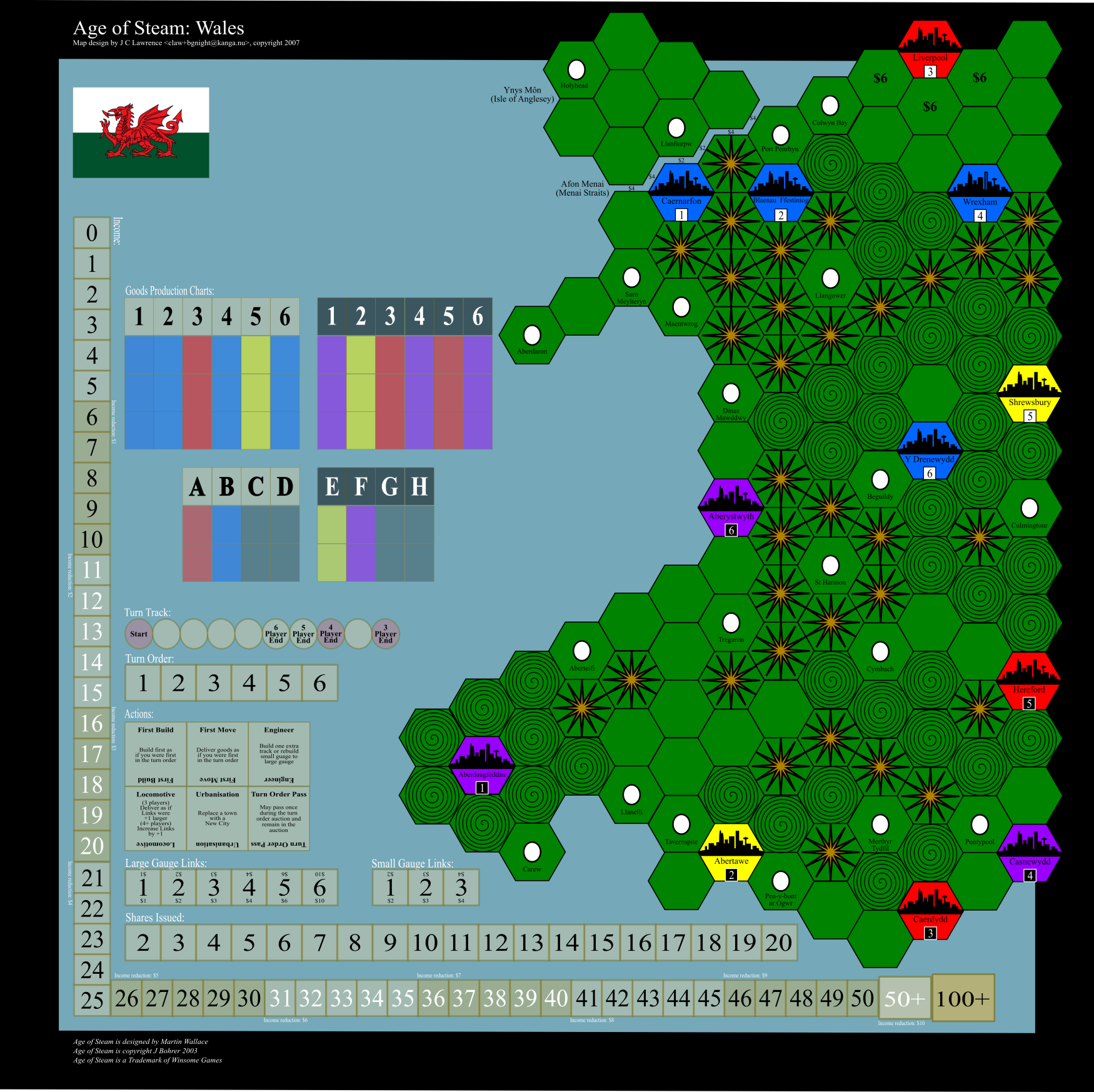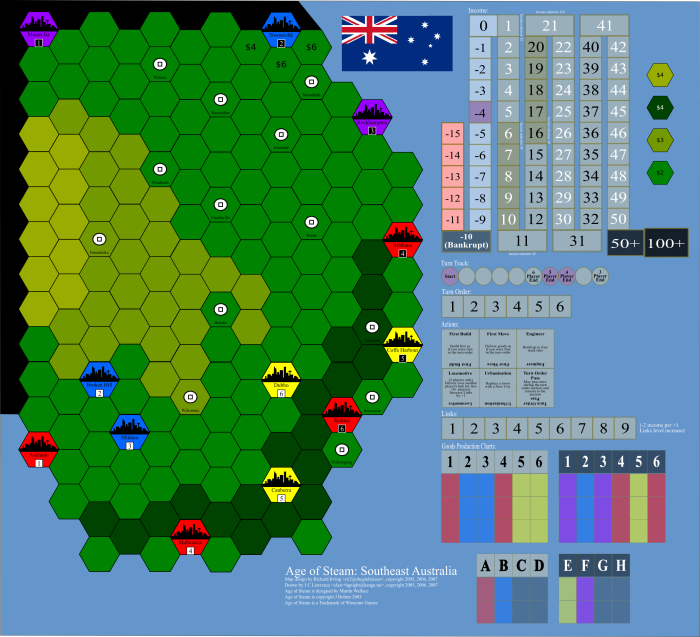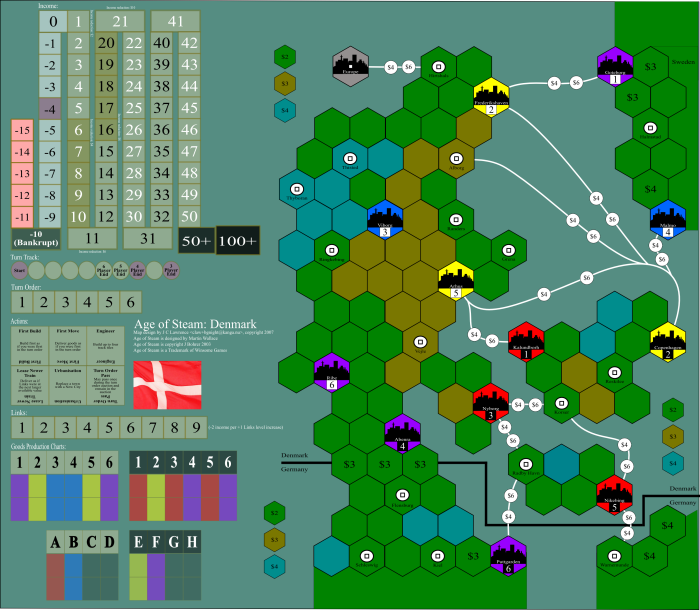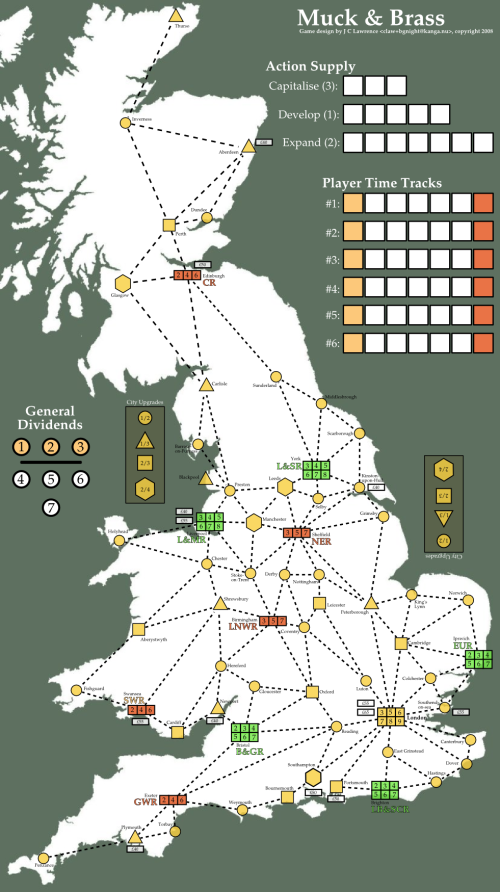11:34 | clearclaw > You rarely play card games, right Ben?
11:35 | Coca_Lite > That’s right, I don’t play a lot of card games.
11:35 > clearclaw nods
11:35 | Coca_Lite > Not ‘traditional’ card games, anyway. I play a lot of Race for the Galaxy but I don’t think that’s what you mean.
11:35 > clearclaw nods. I’ve been noodling a sort of reverse climbing game
11:37 | clearclaw > The core element of the noodle is that played cards form melds against the other player’s played cards
11:37 | clearclaw > And the player of the last card that is part of the highest value meld is the current trick-winner
11:37 | clearclaw > The idea is to extend hand-management out of just to player’s hand to extend across all the hands of all the players.
11:37 | Coca_Lite > Love it.
11:39 | clearclaw > Thus one player leads an ace, another follows with a second ace and is therefore winning with a pair of aces, a third plays a 2, someone plays a pair of twos and is winning with trip 2s, then someone plays 3/4/5 to win with the A/2/3/4/5 etc.
11:40 | Coca_Lite > Yes, I love it. Lately you can take any game and add ‘…without the auction!’ to it, and I’m sold. Your game sounds like Modern Art…without the auction.
11:41 > clearclaw grins. I kinda like it too. Had the idea and posted it last night.
12:28 | clearclaw > Naming the inverse climbing game NotOneMore for the nonce, Tichu-style stairs are simply too hard to calculate comparative probabilities on.
12:29 | clearclaw > That leaves either the standard meld types of pairs, trips, 4-of-a-kind and rummy-esque runs, or going for the Poker set.
12:29 | clearclaw > Current thoughts are:
12:30 | clearclaw > Must either follow suit lead or must extend what has already been played toward a potentially winning meld or must fold.
12:30 | clearclaw > If fold can’t play in that trick any more
12:32 | clearclaw > Once all players pass trick is resolved
12:32 | clearclaw > Possible: If all players pass except the last player to play a card, they may NOT play again.
12:33 | clearclaw > Player may play one or two cards on their turn.
12:34 | clearclaw > Thinking of making melds have the value of the lowest card in them. That would weaken the already enormously powerful straights.
12:35 | clearclaw > Physicality would be all players toss cards into the central pot. As each player takes the lead they take the cards they want from the pot and build their winning meld before them.
12:35 | clearclaw > As they are superceded they toss that back in and another player builds the new winning meld.
12:37 | Coca_Lite > Once a card is ‘committed’ to a meld, it should stay there. No rearranging melds willy-nilly.
12:37 | clearclaw > Why?
12:38 | clearclaw > (asides from the explosive complexity)
12:38 | Coca_Lite > Explosive complexity, and to force early commitments by players.
12:38 | clearclaw > Fair point
12:39 | clearclaw > I’ve been more worried by having the game consist of only one trick as all players play all their cards in the first trick
12:40 | clearclaw > I had been thinking of various 2D arrangements of cards which expressed multi-member participations.
12:40 | clearclaw > And each player has a marker. If the marker is on the graph they are winning. As they are superceded another player becomes King of the Hill.
12:41 | clearclaw > Having committed cards would reduce the single-trick problem greatly.
12:41 | clearclaw > And would put in some interesting hand-management aspects.
12:42 | Coca_Lite > OK, or something like: each player has his own deck of cards with a colored back. Cards contributed to melds score for owners.
12:50 | clearclaw > How about each player plays 1 or 2 cards. The first card must be placed adjacent to a previously played card and the next card (if played) adjacent to that. If the player’s played card(s) form a winning meld they put their marker on one. Any previous player’s marker is removed from the board.
12:51 | clearclaw > Rows and columns of cards must either form legal melds or fractions there-of
12:51 | clearclaw > The value of a meld is the lowest value card in the meld
12:52 | Coca_Lite > Yeesh, it’s starting to sound like deconstructed Uno
12:52 | clearclaw > Scrabble-icious.
12:52 | clearclaw > I thought Uno was only a matching game?
12:52 > clearclaw has never played Uno
12:53 | doho123 > Uno is crazy eights
12:53 | doho123 > Match either the rank or suit of the previously played card
12:53 | clearclaw > I’ve not played that either. Just read the ‘geek page.
12:54 | clearclaw > Discard matching.
12:54 | doho123 > Right
12:54 | clearclaw > The “array” is sort of an agglomerative discard pile I guess.
12:55 | clearclaw > Yes, deconstructed Uno. Ha!



